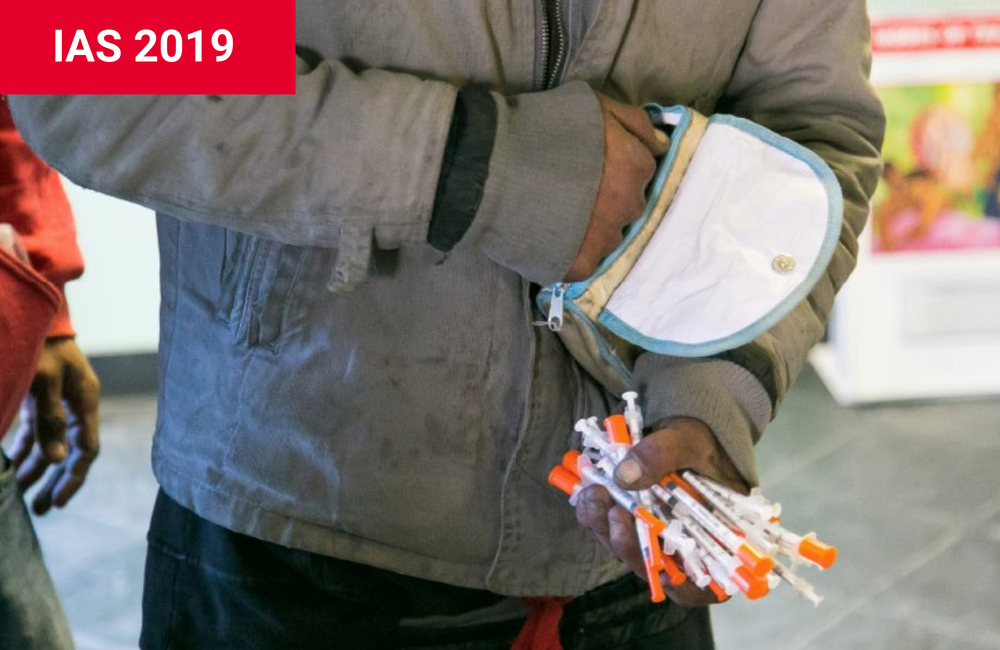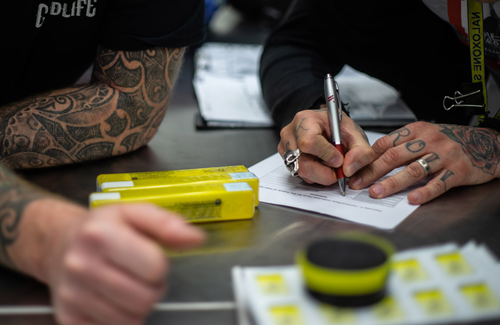
The five most populated cities in South Africa (Cape Town, Durban, Johannesburg, Pretoria and Port Elizabeth) have low coverage of harm reduction services, Dr Andrew Scheibe of the non-profit organisation TB HIV Care told the 10th International AIDS Society Conference on HIV Science (IAS 2019) in Mexico City yesterday. Needle and syringe services distributed an average of 76 needles per person using the service per year, ranging from 52 per person in Pretoria to 174 in Cape Town.
Scheibe assessed needle distribution, opioid substitution therapy (OST) coverage and the HIV treatment cascade among people who inject drugs accessing harm reduction services in the five cities where these services had been introduced.
Programmatic data from January to June 2018 were combined. The average number of needles distributed per person accessing needle and syringe services was calculated. As a proxy for OST coverage, the number of people on OST was divided by the number of people accessing needle and syringe services. The number of people tested and treated for HIV were counted to develop cascades of coverage of HIV services.
South Africa is part of numerous trading routes of drugs that are injected and injecting drug use has risen over the last two decades. For example, heroin-related admissions at rehabilitation services rose from less than 200 in 1998 to 1200 in 2016.
Between 14 and 21% of the estimated 75,000 people who inject drugs in South Africa are living with HIV. For HIV epidemic control among people who inject drugs, the World Health Organization (WHO) recommends needle and syringe programmes (providing 300 needles per person per year), OST (coverage of at least 40%), HIV testing and counselling, and that all people diagnosed with HIV initiate antiretroviral therapy.
In total, 7316 people accessed the needle and syringe programmes (361 in Port Elizabeth, 541 in Durban, 700 in Cape Town, 1365 in Johannesburg, 4349 in Pretoria). The Durban programme was stopped by the municipality in May 2018. “We have to share needles, two to three people on one needle. When it's blunt it hurts your skin,” said one client in Durban following the closure of the programme.
Only 260 people were on OST, representing only 4% coverage across cities (from 0% in Port Elizabeth, 1% in Durban, n = 8, 4% in Pretoria, n = 157, to 8% in Cape Town, n = 55).
Only 24% (n = 1773) of people were tested for HIV over the period. HIV testing ranged from 15% in Pretoria and 26% in Johannesburg to 49% in Port Elizabeth and 57% in Cape Town.
Of those tested, an average of 33% (598 of 1773) were diagnosed with HIV. Diagnosis rates ranged from 3% in Cape Town to 45% in Johannesburg. On average, only 20% of those diagnosed with HIV had started antiretroviral therapy (ART). This again ranged from 6% in Durban to 65% in Johannesburg.
A high loss to follow-up in the cascade between testing HIV positive to viral suppression was found: of the 598 people who tested HIV positive, only 82 (14%) were confirmed to be on ART. Viral suppression data were unavailable across the cities. In Durban, only 1 of the 16 people diagnosed with HIV was confirmed to be on ART. In Gauteng Province (Johannesburg and Pretoria combined), 11% were confirmed to be on ART (62 of 546 who tested HIV positive), 20% in Cape Town (2 of 10) and 65% in Port Elizabeth (17 of 26).
The researchers concluded that to reach HIV epidemic control and meet targets among people who inject drugs in these cities, needle distribution needs to double, OST coverage to expand ten-fold, and access to HIV testing and treatment to increase five-fold.
They also recommended that enhanced mechanisms for linkage and monitoring of ART and viral suppression be created. In Durban, stakeholders need to work with the municipality to have services reinitiated.
Scheibe A et al. Still left behind: Using programmatic data to assess harm reduction service coverage and HIV treatment cascades for people who inject drugs in five South African cities 10th International AIDS Society Conference on HIV Science (IAS 2019), Mexico City, session, MOAC0103, 2019.

